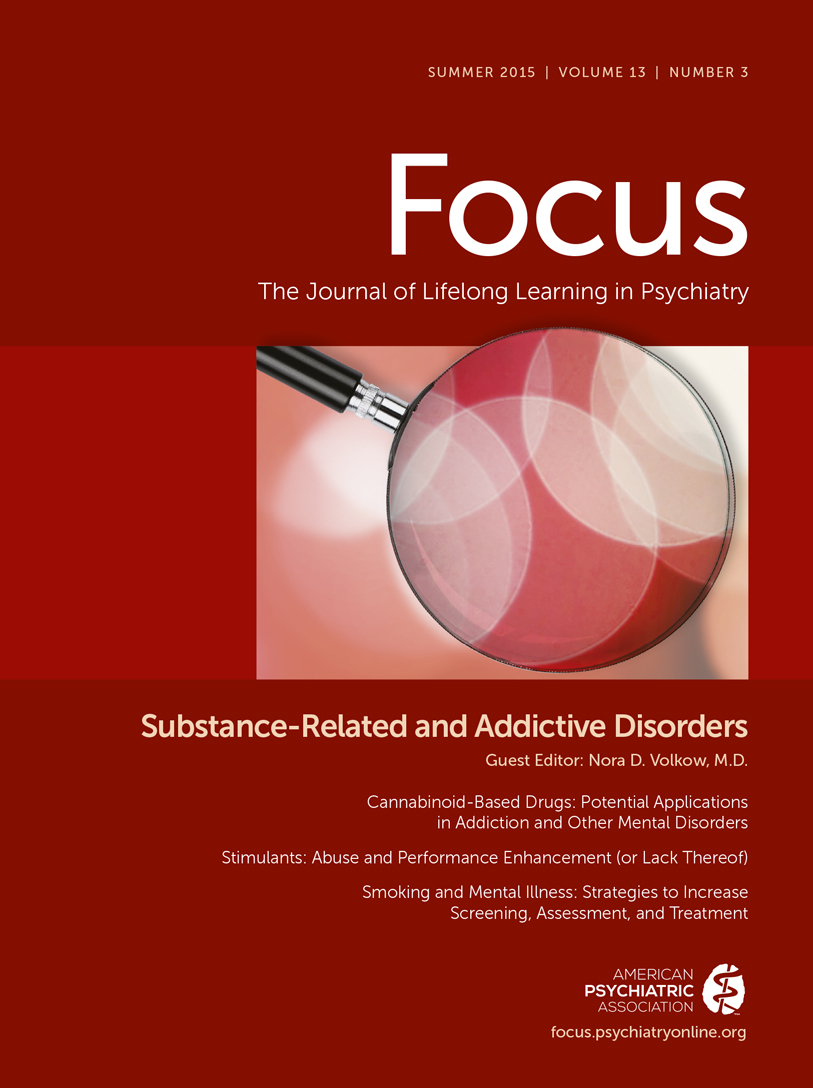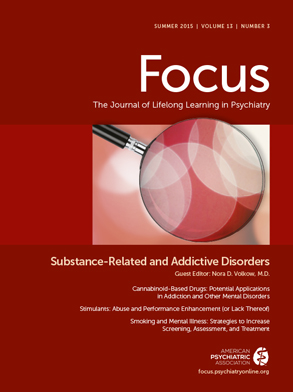“I have a patient with bipolar disorder and alcohol use disorder. He has been through a rehabilitation program, and he now reports that he is not using alcohol or other substances. What are key screening questions (or tools) that any clinician should be asking a patient with a known history of substance use disorder, and how might the patient’s responses be used in treatment?”
To establish a positive clinician-patient relationship, the clinician should first ask how the patient is doing and make other “small talk.” It is always helpful to read the admitting and discharge summaries from the rehabilitation program before meeting with the patient; however, this is not always possible because of delays in obtaining releases or other logistical problems. Regardless of whether the clinician has access to these records, it is important to obtain at the beginning of treatment and in the patient’s own words a history of his or her drinking and other psychiatric and general medical problems.
The first step is to ask the patient questions about the drinking, such as when it started, how much was consumed, and how it progressed to the point where treatment was needed. Among the items that are important to explore are markers of severity, such as the average amount consumed in a usual week of drinking; the most alcohol consumed in a single day; any experiences with craving and, if so, how much on a scale of 1–10, with 10 being the most; and adverse consequences, such as passing out, blackouts, withdrawal (“the shakes”), liver problems, accidents, arrests for driving under the influence, public drunkenness, or other alcohol-related problems.
Answers to these questions will allow the clinician to estimate the severity of the patient’s alcohol use disorder by identifying the number of
DSM-5 (
1) signs and symptoms. Alcohol dependence, as defined in
DSM-IV-TR, often includes tolerance and withdrawal and is at the high end of the
DSM-5 spectrum of severity. Instruments have been developed to screen for
DSM-IV dependence, and the Alcohol Use Disorders Identification Test (AUDIT) is one of the most widely used, and its shorter version is the Alcohol Use Disorders Identification Test—Primary Care (AUDIT–PC) (
2–
4). Some hospitals have included the AUDIT–PC in their electronic health record to identify patients who are at risk for alcohol withdrawal (
4,
5) and are likely to need medication to prevent such withdrawal. Either the full AUDIT or the shorter AUDIT–PC can be administered as part of an initial evaluation for a patient such as the one described above, or the clinician can simply become familiar with its questions and include them in the initial evaluation.
The second step is to ask questions about the patient’s treatment history and treatment response. For example, the clinician should ask the patient about whether he or she has received other treatments for either disorder, if the patient received treatment in an inpatient or outpatient setting, and how long the treatment lasted. The clinician should also inquire about periods of remission and, if any, the duration of each remission; precipitating factors of relapse to either disorder; and the use of relapse prevention medications for the alcohol use disorder (e.g., acamprosate, extended-release injectable naltrexone) and, if so, the degree of helpfulness of these medications. In addition, the clinician should ask whether the patient has participated in Alcoholics Anonymous or other self-help groups, is involved in a current recovery plan that includes participation in one or more of these groups, and is taking medications for the bipolar disorder and how he or she responds to such medications.
A third step is to ask about unprescribed or illegal drug use. Specifically, the patient should be asked about marijuana, amphetamines, benzodiazepines, cocaine, LSD, phencyclidine (Ecstasy), opioids such as oxycodone/aspirin, acetaminophen/oxycodone, oxycodone, or any other illegal or unprescribed drugs. The Drug Abuse Screening Test is a widely used instrument to screen for unprescribed or illegal drug use, and this test can be used to supplement and/or document the history that the health care provider obtains directly from the patient (
6,
7).
A fourth step is to confirm the diagnosis of bipolar disorder, determine whether the disorder is bipolar I or bipolar II, and assess the relationship between the onset of bipolar symptoms and consumption of alcohol or other drugs. Stimulants can cause mood swings and, in some cases, paranoid ideation, delusions, and/or hallucinations. Therefore, it is important to rule out the possibility of substance-induced episodes of mania or depression that resemble bipolar I or bipolar II disorders. In the unlikely event that hypomanic, manic, or depressive symptoms occur only in the context of alcohol or stimulant use and resolve with abstinence, the diagnosis is likely a substance-induced mood disorder rather than a bipolar disorder. Such a change in the initial diagnosis would likely result in reconsidering the need for mood-stabilizing medication that had likely been prescribed before discharge from the rehabilitation program.
A fifth step is to assess the patient’s recovery environment by exploring his or her living arrangements, including housing, relationships with significant others, and the degree of exposure to alcohol or drugs in his or her daily activities.
The last step is to develop a treatment plan that considers all of the information from the initial evaluation and addresses both the substance use disorder and the other psychiatric disorder. The severity of dependence, relapse history, response to previous treatments, and the patient’s own views about what is likely to be most helpful are important in developing a treatment plan for substance use disorder. For example, if the patient has not had periods of extended relapse and is not involved in self-help groups, more intensive treatment should be offered (weekly, biweekly, or more) in the weeks or months immediately after discharge from the rehabilitation program. These more intensive interventions are typically delivered in specialty substance use disorder treatment programs. In regard to the bipolar disorder, many pharmacotherapies are available for treating this disorder, and medication is likely to play a greater role than it does for the alcohol use disorder; however, similar considerations for a treatment plan based on the severity of the disorder, response to previous treatment, and participation in self-help groups apply to both disorders. Educational materials and self-help groups sponsored by the Depression and Bipolar Support Alliance or its online support groups are available, although they are less well known than Alcoholics Anonymous or other self-help groups for persons with substance use disorders. Because treatment of the alcohol use disorder and bipolar disorders is often delivered by different individuals, communication and coordination among clinicians is important to maintain, as is the ability to change the treatment plan if the initial approach is not resulting in the desired outcome.

